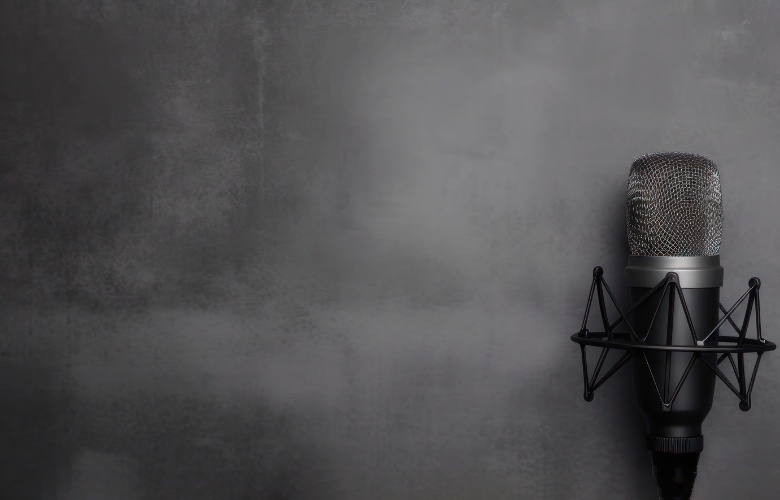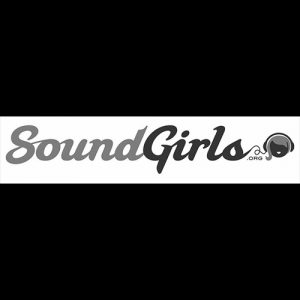
Sound design is as much of an art form as painting, sculpting, acting, dancing… insert any of the visual or performing arts here. One could argue that sound design is totally a performing art! Effects, ambience, and music all have a huge impact on how a story lands for an audience. It is the sound designer’s job to manipulate all the parts so they interact with each other appropriately to have a profound emotional impact.
In the same way that actors will do readings or visual artists will sketch for practice, we sound designers also need to practice our craft independently. This article contains ideas to make sound design a consistent, self-motivated practice. Rather than going into technical how-to’s, the following ideas assume the reader knows the basics of audio engineering and thus focuses on creativity and inspiration instead.
This is perhaps the most accessible exercise you can undertake as well as the most practically useful. Through a consistent practice of recording, sound designers tune into the world around us while building our sound effect libraries. Handheld recorders are not that expensive, or in the worst-case scenario, you can even use the voice memo app on your phone. Ideally, you have a handheld recorder and are capturing in stereo at the minimum.
Take your recorder everywhere. Start by grabbing ambiences. Really tune in and listen to what is happening in the world around you while you are recording and do not stop it until there is a lull in the action. (For example, it would be unfortunate to stop a recording of a street in the middle of a car passing by.) When recording ambiances that stay pretty consistent such as walla, some nature ambiences or even room tone, grab no less than one minute – and that may even be too short sometimes. Capture any less and future loops will be tricky to edit or sound boring.
Tune in to the world around you for singular things that sound interesting close up too. Maybe a crosswalk signal makes a unique sound or you have a loud washing machine; get right up to it and record it.
Go beyond spontaneous recording and also make time to create noise. Breaking celery can make a great sound for breaking bones; a suitcase latch can be a safety mechanism on a pistol; squeezing cooked mac and cheese in your hands could be a basis for gore sounds. There is so much magic in recording an everyday object and making it sound like something else.
The only way to get better at sound design is to do it as much as possible. Going back to our visual artist analogy, sound redesigns are to sound designers as pencil sketches are to painters. It’s our artistic exercise when we are not actively working on a paid project.
A video clip can be from anything that excites you, such as a movie or a playthrough of a video game. Try to find something that is not too current, as people who see this clip may have expectations for how it sounds based on their recent memory. The cool thing about this exercise is that the end goal can be whatever you want it to be. Once in a while, you should do a thirty-second to one-minute clip that is a full sound design as a portfolio piece; but the real practice comes in taking even just a five-second clip and digging into one element, whether you focus on weapons, foley, sci-fi, vehicles… When you focus on one element of a video clip, it is important to record, process, and otherwise create all the sound effects from scratch. Do not throw in sounds from a library unless there are elements that are impossible to create on your own or they are being used in a layer within a sound effect; the point of the exercise is to practice creating sounds from the ground up.
To level this exercise up, create redesigns for different genres to the same clip. What do the objects in the video sound like if they are in a rom-com? Then, what if you took the same clip and designed it as a psychological thriller?
To put it bluntly: there is no point in having five analog synths or fifty reverb plugins if you are not familiar with any of them. You can learn a lot by penciling in a set amount of time to learn something specific. Your work becomes so much stronger when you adequately know your tools, and it is so much more effective to have a few plugins that you know well than a bunch that you do not know how to use!
Type in, “sound design prompt” – literally. ChatGPT will spit out a suggestion that has a ton of detail, or maybe even not that much at all. Hit “generate” until it gives you something inspiring yet challenging. Then, time-block this exercise too. Give yourself between two to four hours and go nuts. Approach it how you want; work in a new DAW, or don’t; record sounds from scratch, or don’t. Really treat this like a “sketch” and make something detailed and unique. And see what you can come up with in just a few hours. Give yourself an added bonus by purposefully integrating something new as discussed in the previous “sketch.” Perhaps you aim to use a feature or keystroke in your DAW, dig into a plugin, or try a new recording technique.
An exercise many new sound designers take for granted, and perhaps one everybody fails to do in our fast-paced existence. Really listen. Tune in and take mental or written notes. Here are some considerations, and this is by no means an exhaustive list.
In real life: What do you hear around you at any given moment? Where are different sounds coming from?
When watching movies or television: How are different elements balanced in the mix? Can you identify the low, mid, and high-frequency layers of sound effects and how do you think they were made? What do you think the editors used for different effects? How is sound used as a thematic and storytelling tool?
When playing video games: all the same things for movies, and even more. How does music change when you enter a new room, have low health, etc.? How are things spatialized? How is sound utilized to give players feedback? How did the sound designers keep events that play over and over from sounding boring? When listening to podcasts: When is scoring used? How are scenes built with sound? How is sound used to transition from one place to another? When listening to music: Can you pick out all the instruments? When are individual instruments not playing and when do they come back? How are instruments panned? What effects are used? Zone into one instrument and pay attention to what it does for the whole song. And – how does the song end?
Take any one of these ideas and do a little bit every day. You would be surprised how many projects you complete and how much you improve over time! As with anything, the hardest part is getting started. Remember that the Mona Lisa was not painted in a day, and each “Star Wars” movie took months or years to sound design and mix. Leonardo DaVinci and Ben Burtt practiced their art their whole lives leading up to and past those accomplishments. Start now, and give yourself permission to just practice without expectations, experiment, and have fun along the way.
By Gilly Moon
The Basics of Sound: What Is It and How Does It Work?
Design Thinking Strategies for Sound Designers


The mission of SoundGirls.org is to inspire and empower the next generation of women in audio. Our mission is to create a supportive community for women in audio and music production, providing the tools, knowledge, and support to further their careers. SoundGirls.Org was formed in 2013 by veteran live sound engineers Karrie Keyes and Michelle Sabolchick Pettinato and operates under the Fiscal Sponsorship of The California Women’s Music Festival, a 501(c)3 non-profit organization. In 2012, Karrie and Michelle participated in the “Women of Professional Concert Sound” panel at the AES Conference in San Francisco. The panel was hosted by the Women’s Audio Mission (WAM) and moderated by WAM founder Terri Winston. Terri brought together five women working in live and broadcast audio. The groundbreaking panel (which also included Jeri Palumbo, Claudia Engelhart and Deanne Franklin), provided young women and men a glimpse into life on the road, tips and advice, and a Q & A with the panelists. More importantly though, was how incredibly powerful the experience was for the panelists. We had all been in the business for 20 years or more, yet most of us had never met before that day and within minutes we bonded like long-lost sisters. We were struck by how similar our experiences, work ethics, and passions were and wondered why our paths had never crossed and how our careers would have been different had we been there to support each other through the years. Each of us are strong on our own, but together we were even stronger and a powerful force. We were empowered. Each of us had been asked hundreds of times in our careers: Are there other women doing sound? How did you get into sound? How would a young woman go about getting into sound? Through creating SoundGirls.Org, we hope to establish a place for women working in professional audio to come for support and advice, to share our success and failures, our joys and frustrations, and for empowerment and inspiration.
Read Full Profile© 2021 TheatreArtLife. All rights reserved.

Thank you so much for reading, but you have now reached your free article limit for this month.
Our contributors are currently writing more articles for you to enjoy.
To keep reading, all you have to do is become a subscriber and then you can read unlimited articles anytime.
Your investment will help us continue to ignite connections across the globe in live entertainment and build this community for industry professionals.